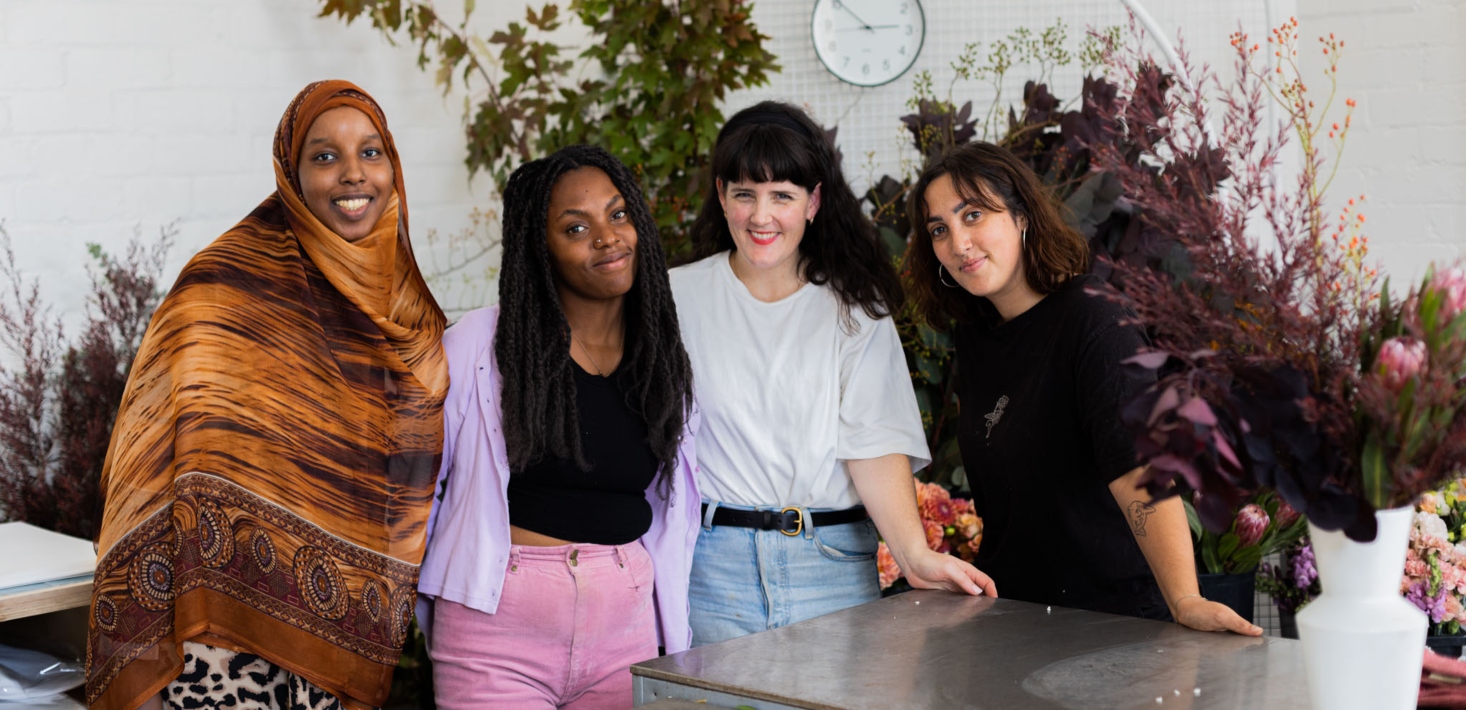Floristry business – StartupSmart

The floristry industry is one that has a long lifespan – flowers are perennially associated with friends, family and loved ones and enjoy huge demand from a broad customer base.
Florists work hard and face tough competition – the industry might look fairly simple but behind the scenes are some very sophisticated operations.
StartupSmart spoke to some industry experts about what it takes to make it in the flower business.
What is it and who is it suited to?
Floristry is a term used to describe the professional flower trade, which includes cultivation of flowers, their arrangement and the business of selling them.
Florists traditionally sold their produce in bricks-and-mortar stores but the rise of online retail has seen a wave of web-based florists enjoying huge success.
People often choose floristry as a second career later in life because there are no age barriers to success, but previous experience in design certainly comes in useful.
To be a florist you need to be able to design and assemble floral displays for distribution and sale, with arrangements varying in size from individual bouquets to elaborate centerpieces for important events.
In order to succeed in the world of floristry you must be able to multi-task and work under pressure, particularly around days such as Valentine’s Day and Mother’s Day, when florists are run off their feet.
You also need to have excellent personal skills because flowers are associated with a wide range of emotions – one customer could be honouring a deceased loved one while another might order flowers for her wedding day.
You need to know how to run a small business. Many people start a florist business with excellent floristry skills but little business sense.
In order for the business to succeed you must be prepared to develop a variety of skills, including sales and marketing, stock ordering and accounts.
Rules and regulations
There are no specific rules you need to follow when starting a florist business but if you employ staff you need to comply with employment legislation such as minimum wages and working hours.
Research and competition
According to the Floral Art School of Australia a course in floral design is highly recommended if you intend to operate as a florist.
“Many of our students enrol in our floral course to become a florist or floral designer in the floristry industry or to work from home,” principal Fay Chamoun says.
“In the commercial floristry course you will learn how to care for flowers so they last the longest possible time and the basic rules of flower arranging.
“You will also learn all about the floristry industry, including flower shop management and retail florist training.”
An important trend to note in the industry is that consumers are increasingly ordering flowers online rather than going to traditional florist stores or flower stalls.
According to online flower retailer 1300 FLOWERS the increased penetration of broadband internet will continue to boost the number of online flower businesses, posing a threat to their offline counterparts.
“More and more people are ordering online flowers as a means of saving time and effort. As a result a small number of reputable businesses have set up offering online flowers,” a company spokesperson says.
“The trend towards online flowers in Australia is certainly not a new one and we are not alone … the online flowers market is even more developed in the United States and the United Kingdom.
“In fact a number of the overseas online flower retailers have branched out into other online gifts such as gift baskets, wine and lifestyle products.”
Costs and earnings
It’s estimated that you’ll need between $10,000 and $50,000 to start a flower business.
Regardless of whether you decide to start up online or offline you will need to set up a work station and storage area, which will require refrigeration units in addition to at least one delivery vehicle.
You will have to purchase consumables on a regular basis, including flowers, containers, wrapping paper, floral tape, gift cards, balloons and stuffed animals.
That is in addition to electricity, water, advertising, internet access and – at a later date – staff wages.
With regard to earnings it’s important to note that only half the cut flowers sold in Australia are sold via traditional florists.
Increasing competition from other retailers is responsible for the other half, cutting sales substantially. For example eFloristsRus.com.au sells express flowers ranging between $45 and $400.
According to IBISWorld using convenient flower outlets is still the most preferred way to purchase flowers, followed by the phone and internet.
If you are planning to operate offline make sure you choose a location with a fair amount of foot traffic.
An average day
As the Floral Art School points out, floristry is not all glamour, there is a lot of hard work and long hours involved. Duties as a florist could include:
- Unpacking stock as it arrives.
- Conditioning flowers and watering plants.
- Pricing merchandise and displaying it attractively.
- Attending to customers.
- Answering the phone.
- Completing orders and making up designs for the store.
- Ensuring the store is kept clean and tidy.
- Keeping up-to-date with bookwork.
- Handling deliveries.
Contacts
Floral Art School of Australia and International Floral Design School
03 9523 6925
Flower Association of Queensland
07 3824 9537
Australian Chamber of Commerce and Industry
02 6273 2311 (Canberra)
03 9668 9950 (Melbourne)
Australian Government Small Business Support Line
1800 777 275

